CANNES AND SPANISH CINEMA
BY DIEGO GALÁN *
|
Claude Lelouch, Jean-Luc Godard, François Truffaut, Louis Malle and Roman Polanski, Cannes, 1968. |
A number of filmmakers stormed the stage to interrupt the day’s screening. It was May 1968 and the streets were filled with students who had come to protest against a model of society they considered to be obsolete and unfair. The most sensitive filmmakers supported this cause, reflecting the demands of students and workers in the world of film. The Festival was obliged to become part of the popular revolt… and shut down.
On 19th May, Jean-Luc Godard, François Truffaut and Louis Malle, among others, clung to the curtains to prevent the scheduled screening of the day. It was Peppermint Frappé, a Spanish film by Carlos Saura (produced by Elias Querejeta) with Geraldine Chaplin, who joined the demonstrators to interrupt the screening that was about to start. But when Godard saw Geraldine Chaplin on stage, he thought that the actress was there to defend her film, and in the struggle he punched her, leaving Charlie Chaplin’s daughter with a missing tooth. Today, she jokes about it but at the time, she actually thought – for just a moment – about getting into a fist fight with the Swiss director!
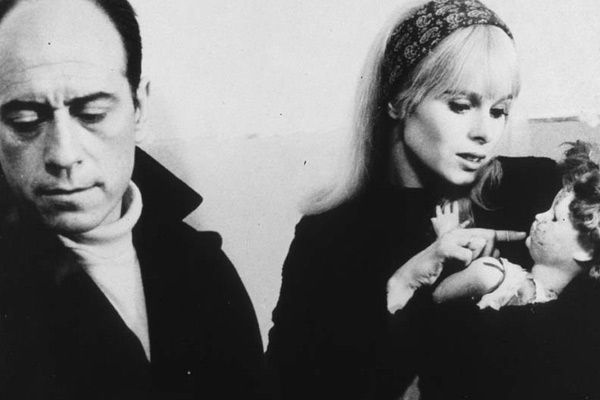
Peppermint frappé directed by Carlos Saura
SAURA AND BUÑUEL
Of course, not all the Spanish films screened at the Festival de Cannes end in a fist fight – far from it. Frequently, although perhaps not often enough, Spanish films are presented in the official Selection (Competition, Un Certain Regard) or in the parallel sections. For example, Carlos Saura now has ten Festival participations under his belt, the first of which was to present his earliest work, Los Golfos (1960). At the time, he was a young man who was curious about life, a 28 year old who was preoccupied with social realism. This was the year when, at the Festival de Cannes, he struck up a friendship with Luis Buñuel, the Spanish filmmaker in exile in Mexico, who presented his English film The Young One. When Saura took part in the Festival once again a number of years later, in 1968, with Peppermint Frappé, he had found a new voice and a certain freedom, combining his preoccupations with realism, memory and the traumas brought about by the civil war with a dialectal interplay between dream and reality 1. While many attribute this stylistic shift to the influence of Buñuel, we believe that Saura used the dramatic possibilities of cinema above all to eschew the fierce censorship of General Franco in Spain.
 |
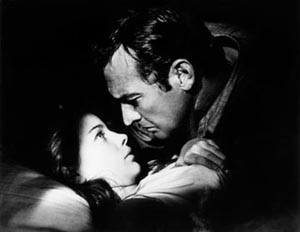 |
| Los golfos directed Carlos Saura | The Young One directed by Luis Buñuel |
Carmen directed by Carlos Saura (presented at Cannes in 1983)
Nevertheless, Spanish censorship remained a ruthless force to be reckoned with. Presented in 1953, Bienvenido Mr. Marshall, a work by the genius Luis G. Berlanga 2 [who did not receive the attention he deserved from the Festival de Cannes], offers a funny and tender satire on poverty in Spain and the aid that European countries received from the US. In the final scenes, a little American flag is swept along by flowing water towards a sewer drain. This image angered Edward G. Robinson, a member of the jury, who felt it revealed perverse intentions that Berlanga never actually had. But Spanish censorship was more attentive to the actor’s protests than to the director’s explanations, and ordered that this shot be cut. Fortunately, it has since been restored.
Bienvenido Mr.Marshal directed by Luis G. Berlanga
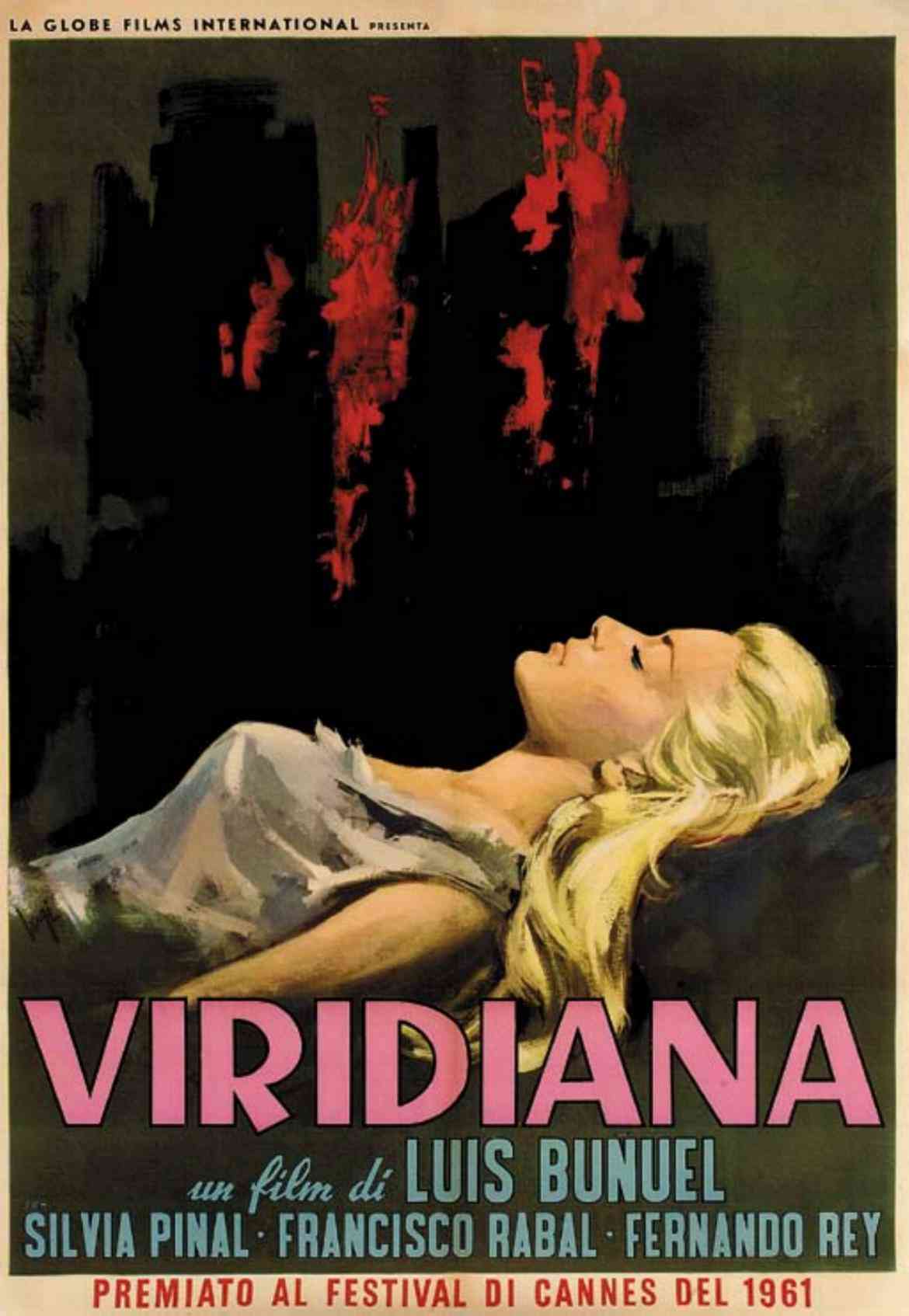 Spanish censorship was very attentive to everything that happened outside the country. Thus, when Luis Buñuel received the Palme d’Or for Viridiana, his first film shot in Spain after the civil war, L´Osservatore Romano published an outraged denunciation of the film as blasphemous. Consequently, Franco’s government stripped the filmmaker of his title as director general of cinema when he went to receive his trophy and not only forbade the distribution of the film in Spain, but also ordered the destruction of the negative of a film that it pretended had never existed. In addition, the government managed to halt the activities of the Spanish production company Uninci. However, Viridiana was coproduced with Mexico, which meant that it could still be distributed worldwide, with the exception of Spain, where it was released in cinemas for the first time in 1977, after Franco’s death, sixteen years after it had received the Palme d’Or. Years later, after the new millennium had been ushered in, the Festival paid homage to Buñuel and Viridiana 3.
Spanish censorship was very attentive to everything that happened outside the country. Thus, when Luis Buñuel received the Palme d’Or for Viridiana, his first film shot in Spain after the civil war, L´Osservatore Romano published an outraged denunciation of the film as blasphemous. Consequently, Franco’s government stripped the filmmaker of his title as director general of cinema when he went to receive his trophy and not only forbade the distribution of the film in Spain, but also ordered the destruction of the negative of a film that it pretended had never existed. In addition, the government managed to halt the activities of the Spanish production company Uninci. However, Viridiana was coproduced with Mexico, which meant that it could still be distributed worldwide, with the exception of Spain, where it was released in cinemas for the first time in 1977, after Franco’s death, sixteen years after it had received the Palme d’Or. Years later, after the new millennium had been ushered in, the Festival paid homage to Buñuel and Viridiana 3.
In spite of this conflict, Luis Buñuel returned to film in Spain some time later and his new film, Tristana (1970), was presented in the official Out of Competition selection in Cannes. Then in 2010, Pedro Almodóvar, accompanied on this occasion by the actress Catherine Deneuve (leading role), paid tribute to Buñuel.
Viridiana directed by Luis Buñuel
Tristana directed by Luis Buñuel
In the 1950s, before all these events took place, Spanish cinema focused for the most part on themes from folklore and religion, and these were the types of film typically shot in the country during this period. Examples include Balarrasa (1951), which combines a tribute to the victors of the civil war with religious cinema, or Debla, La Virgen Gitana and Rumbo (1951), both films dedicated to the glory of the singer Paquita Rico. The Franco government spent lavish amounts of money presenting its own films in Cannes, inviting the most famous artists, such as Paquita Rico, who would entertain the audience after screenings with songs and dancing while the guests enjoyed a giant paella brought in especially from Madrid. But, in 1951, it was difficult for these films to compete with Miracolo a Milano, All About Eve, A Place in the Sun, Fröken Julie or Los Olvidados, for which Luis Buñuel received awards.
María Morena directed by José María Forqué and Pedro Lazaga
The Spanish governing powers did not let that discourage them and one year later, in 1952, they returned with Paquita Rico and her new film María Morena. The same year saw the screening of Surcos, an interesting film by José Antonio Nieves Conde that explored the black market and corruption in coded language. Neorealism did not emerge until later in Spanish cinema. That year in Cannes, two films were presented and won awards: Due Soldi di Speranza by Renato Castellani and Umberto D by De Sica. Two examples of films that denounced the political scene are Nous sommes tous des assassins and Viva Zapata – Marlon Brando won the Best Actor award for his role in the latter. What do Spanish films that were censored at the time have to offer? While films of a much higher quality, such as Cómicos (1954) and La Venganza, (1958) by Juan Antonio Bardem, were in Competition in Cannes, their distribution outside the country remained the exception rather than the rule 4.
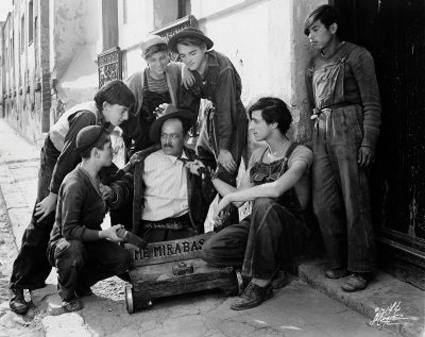 |
 |
| Los olvidados directed by Luis Buñuel | La venganza directed by Juan Antonio Bardem |
The case of Marcelino Pan y Vino (The Miracle of Marcelino, 1955) is unusual: the film received a distinction at Cannes for the child who played the lead role and was awarded the Silver Bear one month later at the Berlin Festival. At that time, Festivals took the liberty of screening the same films.
Marcelino, Pan y Vino (The Miracle of Marcelino) directed by Ladislao Vajda
EXCEPTIONS
The obsessive censorship in Spain and the contempt that Franco’s dictatorship generated in democratic countries rightly placed Spanish cinematography in a position of inferiority. Spanish critics were frequently outraged to see that the Festival had not chosen a single production from their country: in their opinion, the final selection sometimes presented films that were much less interesting than those made by Spanish directors. They also protested when a Spanish film was selected by the Festival as an exception that was not in line with typical national production.
This was the case of Campanadas a Medianoche (Chimes at Midnight), filmed by Orson Welles in Spain thanks to the commitment of a producer who eventually had to sell the rights to the film in order to complete filming. This masterpiece, a kind of a last will and testament left by Welles, only won the C.S.T prize for its technical qualities, and even that was shared with two other films 5! The jury, presided that year by Sophia Loren, did not make the best choice.
Campanadas a medianoche (Chimes at Midnight) directed by Orson Welles
Generally, foreign critics have certain prejudices about Spanish films and often see references to the civil war, the dictatorship, or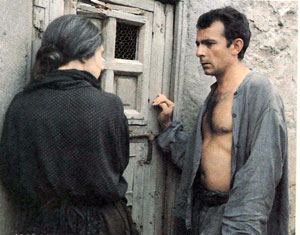 the brutality of certain Spanish customs in them. This is clearly the case with Pascual Duarte by Ricardo Franco (1976) [an adaptation of the novel, La Familia de Pascual Duarte, written by Camilo José Cela in 1942, which ushered in “social realism” to a certain extent]. This film denounces the dreadful living conditions of the poor farming class, as well as capital punishment and the barbarous “garrotte vil” 6. It contains some very harsh sequences, particularly the shooting of a dog by a rifle, a scene that raised some protest from viewers, but which did not prevent the male protagonist, José Luis Gómez, from winning the prize for Best Actor.
the brutality of certain Spanish customs in them. This is clearly the case with Pascual Duarte by Ricardo Franco (1976) [an adaptation of the novel, La Familia de Pascual Duarte, written by Camilo José Cela in 1942, which ushered in “social realism” to a certain extent]. This film denounces the dreadful living conditions of the poor farming class, as well as capital punishment and the barbarous “garrotte vil” 6. It contains some very harsh sequences, particularly the shooting of a dog by a rifle, a scene that raised some protest from viewers, but which did not prevent the male protagonist, José Luis Gómez, from winning the prize for Best Actor.
Another prize was awarded in 1984, this time ex aequo for the two protagonists of Los Santos Inocentes (The Holy Innocents) by Mario Camus, [a film inspired by the novel of the same name by Miguel Delibes], which also describes the poor living conditions of farmers and their exploitation by the “masters”. Francisco Rabal and Alfredo Landa went on stage to receive their awards presented by the President, Dirk Bogarde. This was the first year that the closing ceremony was broadcast live on television, without the names of the award-winners being known in advance 7.
Los Santos Inocentes (The Holy Innocents) by Mario Camus
It must be acknowledged that Pilar Miró, the new Director General of the Institute of Cinema, completely changed the image of Spanish cinema at the Festival. She started by enlarging the stand at the Marché du Film using better advertising panels, and the same year, she organised a memorable party attended by “everyone who’s anyone” at Cannes, notably the French Minister of Culture, Jacques Lang.
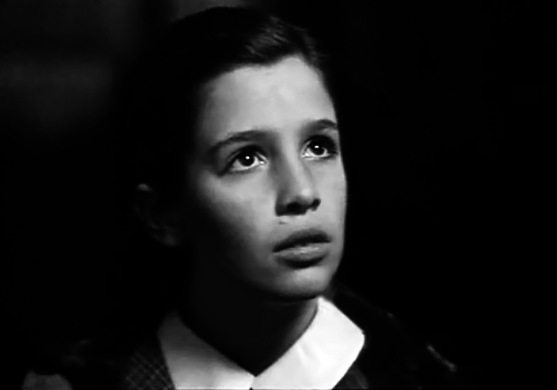 Pilar succeeded in having excellent Spanish films screened in Cannes. One example is El Sur by Víctor Erice, a film that was put on hold by the producer, but nonetheless released the previous year. It is an extraordinarily beautiful film, even in its unfinished state. El Espíritu de la Colmena also won the Coquille d’Or at the Saint Sébastien Festival in 1973, and this film was presented the following year at the Semaine de la Critique in Cannes. One can also cite El Sol del Membrillo, an excellent film that received the FIPRESCI prize and the special jury prize. The jury that year was presided over by Gérard Depardieu and included Pedro Almodóvar, among others. In 2002, Victor Erice was back in Cannes with Alumbramiento, a fragment of the collective film Ten Minutes Older, which is the best of all in my opinion 8. To complete this reference to Víctor Erice, we should also mention that he was a member of the jury at the 2010 Festival de Cannes. 9
Pilar succeeded in having excellent Spanish films screened in Cannes. One example is El Sur by Víctor Erice, a film that was put on hold by the producer, but nonetheless released the previous year. It is an extraordinarily beautiful film, even in its unfinished state. El Espíritu de la Colmena also won the Coquille d’Or at the Saint Sébastien Festival in 1973, and this film was presented the following year at the Semaine de la Critique in Cannes. One can also cite El Sol del Membrillo, an excellent film that received the FIPRESCI prize and the special jury prize. The jury that year was presided over by Gérard Depardieu and included Pedro Almodóvar, among others. In 2002, Victor Erice was back in Cannes with Alumbramiento, a fragment of the collective film Ten Minutes Older, which is the best of all in my opinion 8. To complete this reference to Víctor Erice, we should also mention that he was a member of the jury at the 2010 Festival de Cannes. 9
Alumbramiento directed by Victor Erice
After Franco’s death in November 1975, new Spanish cinema was increasingly present at the Festival de Cannes and became progressively more interesting. We cannot provide an exhaustive list here 10, as it would far exceed the limits of this article. The same is true for films co-produced by Spain (Paul Leduc, Manoel de Oliveira, Patricio Guzmán, Lucrecia Martel, Steve Soderberg, Ken Loach, Emir Kusturica, Woody Allen, etc.).
ALMODÓVAR
The new Spanish democracy still had to struggle against residual issues of the past. The last film in the history of Spanish cinema to have been banned was at last screened and well received by audiences. During the 1980s, everything was changing. Viridiana was finally released, political parties were legalised, new films were made about the historic past and new figures emerged to explore this new reality in surprising ways. One example is Pedro Almodóvar.
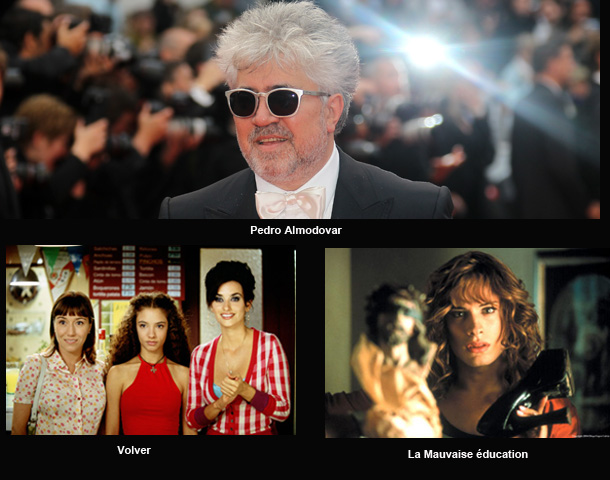
The talent of this young director was not unveiled at the Festival de Cannes. His first two films were presented at the Saint Sébastien Festival and Mujeres al Borde de un Ataque de Nervios at the Venice Festival since, rumour has it, the film was rejected by both the selection committee of the Festival de Cannes and the Director’s Fortnight. It did, however, make the front page of Le Monde in an article by Louis Marcorelles and when the film was projected at the Marché du Film, it was bought by Orion. Since then, Almodóvar has become famous around the world and the Festival de Cannes has acknowledged its mistakes by showing him all kinds of recognition ever since. He received the prize for Best Director in 1999 with Todo Sobre Mi Madre, on a decision given by the jury that was presided by David Cronenberg. In 2004, he inaugurated the official Out of Competition selection with La Mala Educación and, two years later, he carried off the prize for Best Screenplay with Volver, while the actresses in the film shared the Best Actress award. Almodóvar also competed in 2009 with Los Abrazos Rotos.
Todo Sobre Mi Madre directed by Pedro Almodóvar
Almodóvar is at the epicentre of a whirlwind of ideas, emotions and passion. Since Buñuel and Saura, no other Spanish director has met with the worldwide success that he now enjoys. [Although his success did not have its origins in Cannes, the Festival has played a part in his international fame.] Almodóvar represents an idyllic relationship between Spanish cinema and the Festival de Cannes, although the full potential of this idyllic period has yet to be fully exploited. With the recent productions of Alejandro González Iñárritu’s Biutiful, Alejandro Amenábar’s Ágora, Guillermo del Toro’s El Laberinto del Fauno, and Jaime Rosales’ La Soledad, there remain a good number of high-quality Spanish films yet to be discovered.
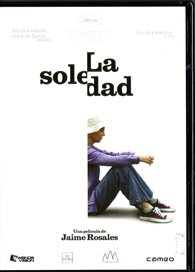
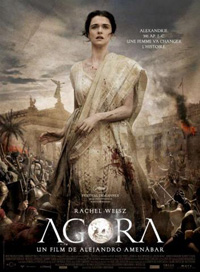
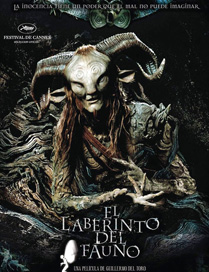
READ >>> MEMORIES OF CANNES BY VICTOR ERICE
1- Saura’s entries in the Festival de Cannes: Ana y los lobos (Ana and the Wolves) in 1973; La prima Angélica (Cousin Angélica) winner of the Special Jury Prize in 1974; Cría cuervos (Raising Ravens) winner of the Special Jury Prize in 1976; Elisa, vida mía (1977), Best Actor Award for Fernando Rey; Los ojos vendados (Blindfolded Eyes) in 1978; Carmen, winner of theGrand Prix of the C.S.T. in 1983; El Dorado (1988), and, screened Out of Competition, the films: Bodas de sangre (Blood Wedding) in 1981, El amor brujo (The Hexed Love) in 1986 and Tango (1998).
2 – His only films to be screened at the Festival de Cannes were Plácido in 1962 and Patrimonio nacional (National Heritage) in 1981, a fact that is frequently forgotten. At the 23rd ceremony of the European Film Academy Awards in 2010, the recent deaths of Claude Chabrol and Mario Monicelli were mentioned, but not that of Berlanga, although it had occurred around the same time.
3 – The Festival de Cannes made Luis Buñuel world famous. Screened in 1951, his film Los olvidados (The Forgotten Ones, aka The Young and the Damned in the US) won the Best Director Award. Several films followed in Competition: Subida al cielo (Ascent to Heaven aka Mexican Bus Ride) in 1952, El (This Strange Passion aka Torments) in 1953, Nazarín (winner of the 1959 Jury Prize) and El ángel exterminador (The Exterminating Angel), which won the FIPRESCI Prize in 1962.
4 – In the context of the Festival, the Spanish authorities found that the most legitimate films for selection were those with evocative titles: Así es Madrid (1951), Doña Francisquita (1953), Duende y Misterio del Flamenco (1953), Todo es Posible en Granada (1954), Aventuras del Barbero de Sevilla (1954), Tarde de Toros (1956), or Luna de Miel, a curious foray into the realm of Spanish film by Michael Powell (1959).
5 – Skater Dater, by Noel Black and Un homme et une femme, by Claude Lelouch.
6 – An execution device used in Spain between 1820 and 1978, when capital punishment was abolished. It is composed of an iron collar with a vice that kills the condemned person.
7 – The return of the winners to Cannes had to be extremely discreet, so that no one would notice their presence. Alfredo Landa arrived at the airport dressed in a gaberdine with a hat pulled down over his eyebrows: but his oddball outfit perhaps attracted even more attention and risked reversing the intended result! He was in Pilar Miró’s rooms when someone knocked on the door and Landa had to hide in the wardrobe: a very comical situation! The problem did not arise with Paco Rabal, because he had stayed on in Cannes to be an actor in other films.
8 – The other directors were Spike Lee, Aki Kaurismäki, Chen Kaige, Jim Jarmush, Werner Herzog and Wim Wenders.
9 – To come back to Pilar Miró, who was a very important figure in the modern history of Spanish cinema: prior to her official position as Director General of the Institute of Cinema, she was a director, an activity that she would take up again upon leaving her position. In 1993, she took part in Un Certain Regard at Cannes with El Pájaro de la Felicidad but she had also taken part earlier, in 1981, in a round table on freedom of expression. Her film had been confiscated in Spain by the military authority, which explained her presence at the event. The film narrates the story of two poor farmers accused of killing a shepherd in 1910 who confess to the crime under torture and are condemned to a prison sentence. The crime is pure fiction, however, as the shepherd presumed dead has simply moved to another area. El Crimen de Cuenca was banned for three years: During this period, the Directors’ Fortnight requested to screen the film. The request was refused by the Spanish government, which, although it was officially a full democracy at the time, was still heir to the stigmatism of the Franco era and only authorised the release of the trailer! During this period, Pilar Miró was called before a military tribunal and faced the prospect of a long prison sentence.
* Diego Galán is a film critic and historian.
The Festival de Cannes would like to thank the authors for contributing for free.


